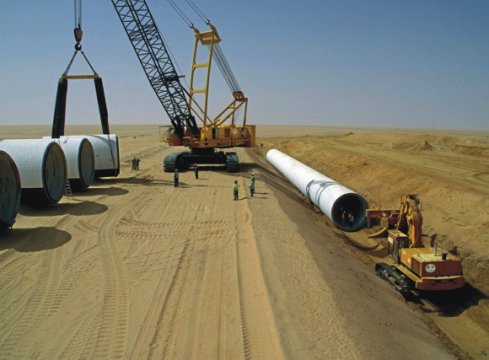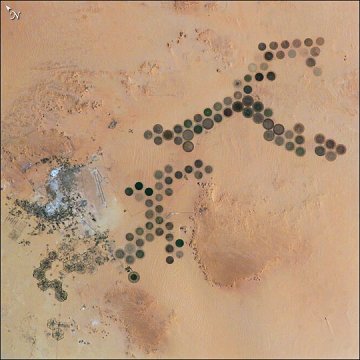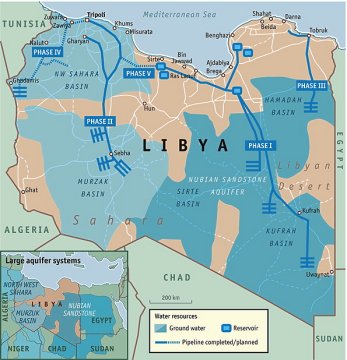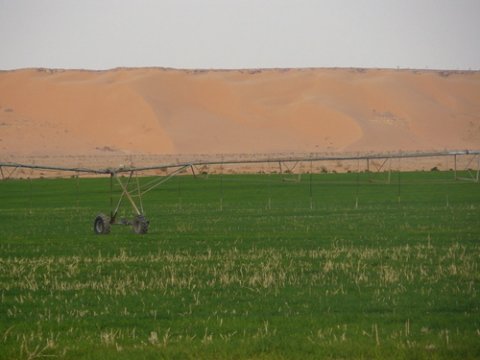|
John Tyman's Cultures in Context Series EGYPT and the SAHARA www.johntyman.com/sahara |
|
7.3 Future Challenges : Rural and Urban Pt. I: 604-615 |
| . |
|
John Tyman's Cultures in Context Series EGYPT and the SAHARA www.johntyman.com/sahara |
|
7.3 Future Challenges : Rural and Urban Pt. I: 604-615 |
| . |
 |
| .612. The most dramatic examples of this process have been in Libya. Only 2% of Libya receives enough rainfall for cultivation and in the 1970s the government launched a massive irrigation project in the southeast of the country, in the heart of the Sahara. (Laying water pipeline courtesy Turkiye Muteahhitler Birligi) |
 |
| .613. Here, at Kufra, non-renewable fossil water was pumped from an underground aquifer and distributed using a pivot irrigation system, the arms of which were typically a kilometre in length --and produced round fields that could be seen from space. (Satellite image of Kufra oasis at Wikipedia) |
 |
| .614. Then, in the 1980s, the Libyan government announced that they would sink a thousand wells and build a “Great Manmade River” to carry fossil water from the same aquifer (in underground pipes) all the way to the coast, to support Libya’s growing population and industrial development. (Map of project at Perc.org) |
 |
| .615. Government representatives declared that this water supply would last a thousand years: but independent scientists suggested only 60, and by December 2011 excessive exploitation of the aquifer had already caused the lake in Kufra to dry up completely. So the long-term future of both projects (one rural and the other urban) is in doubt. (Rotary sprinkler in use in Algeria, near El Golea, courtesy J. Etienne) |

![]()
Text and photos by John Tyman
unless otherwise indicated.
Intended for Educational Use
Only.
Contact Dr. John Tyman at johntyman2@gmail.com
for more information regarding
licensing.
![]()
www.hillmanweb.com
Photo processing, Web page layout,
formatting and hosting by
William
Hillman ~ Brandon, Manitoba ~ Canada